
Research Article
Austin J Musculoskelet Disord. 2023; 10(1): 1064.
Management of Sciatica Pain in Primary and Secondary Settings
Suresh K*
Family Physician & Public Health Consultant Bengaluru & Visiting Professor of Practice-MPH, Schools of Environmental Science, Public Health and Sanitation Management, Karnataka State Rural Development and Panchayat Raj University (KSRDPRU), GADAG, India
*Corresponding author: Suresh Kishanrao Family Physician & Public Health Consultant Bengaluru & Visiting Professor of Practice-MPH, Schools of Environmental Science, Public Health and Sanitation Management, Karnataka State Rural Development and Panchayat Raj University (KSRDPRU), GADAG, Karnataka India. Tel: 919810631222 Email: ksuresh.20@gmail.com
Received: April 20, 2023 Accepted: May 22, 2023 Published: May 29, 2023
Abstract
Katishoola is the term used in ayurvedic texts which resembles low back pain. The term ‘Kati’ used for lower back arises from the oldest language of human civilization, Sanskrit (4000–5000 BC). In an ancient text, Amarkosha ‘Kati’ has been related to the area of ‘Sroni’ or hip bone. Shoola (Ruja, Vyatha, Yama, or Ruk) is pain or discomfort.
The earliest evidence of back pain outside the Indian subcontinent comes from an ancient Egyptian surgical text called Edwin Smith papyrus (named after Edwin Smith, who bought it in 1862. Sciatica pain is a direct result of pressure on sciatic nerve or sciatic nerve root pathology. The sciatic nerve is made up of the L4 through S2 nerve roots, which coalesce at the pelvis to form the sciatic nerve. About 2cm in diameter, the sciatic nerve is easily the largest nerve in the body. Sciatica pain often is worsened with twisting, bending, or coughing.
In India most practicing doctors across all systems usually determine the cause of Sciatica pain by asking a few questions and a thorough physical examination. Imaging is initially of little value. An MRI or a non-contrast CT scan may be performed to evaluate fracture if plain films are negative. Management of Sciatica traditionally revolves around reducing pain and inflammation, strengthening supportive muscles in lower back, hips, and thighs. Laminectomy or Discectomy are attempted if the surgery is needed to relieve the pressure on the nerve. Of late a New German technology powered based on regenerating new tissue becoming popular.
This article reviews about 5 patients and 6 episodes of Sciatica. Four episodes were common and two un-common conditions, of which only needed laminectomy. Their management by different systems of medical practice are described and review of the literature across the systems adds to the epidemiology, causes and management of Sciatica in India.
Materials & Methods: Four cases, one of them suffering twice after an interval of a decade and traditional management of these cases by allopathic, Unani system, Homeopathy and Yoga exercises, for the core content of sciatica management in Primary and secondary settings. Brief notes on two cases needing surgery and the first-hand information on latest QI based neuromodulation approach update complete the options currently available in India.
Keywords: Backache; Sciatica; Short term Sciatica due to direct pressure/pregnancy; Bugling/herniated disc; Imaging; Ibuprofen; Muscle relaxants and anti-depressants
Introduction
Katishoola is the term used in ayurvedic texts which resembles low back pain (4000-5000 BC). The earliest evidence of back pain outside the Indian subcontinent comes from an ancient Egyptian surgical text called Edwin Smith papyrus (named after Edwin Smith, who bought it in 1862) [1].
Sciatica is a relatively common musculoskeletal disorder with a prevalence ranging from 2–5%, depending on the population. Lifetime incidence is reported to be between 10% to 40% and an annual incidence of 1 to 5% in India. It rarely occurs before age 20 unless secondary to trauma. There is no association with body weight or height except in 50 to 60 age group.
The prevalence of sciatica or radiculitis ranges from 1.2% to 43% worldwide. Slipped discs or Lumbar Disc Herniation (LDH) is common disease in the world, with sciatica pain as the most common related symptom, though not every slipped disc is painful. The typical clinical presentation is pain radiating from the waist to the lower extremities, often accompanied by sensory or motor disturbances. The symptoms usually go away on their own within six weeks in most cases, but many people have back pain that keeps on returning. Any pain that radiates down leg and into foot may be a sign of a slipped spinal disc, or “herniated disc.” In rare cases, numbness in the buttocks or signs of paralysis may develop in addition to the pain & might affect the function of the bladder or bowel, needing immediate treatment [2].
Causes of Sciatica Nerve Pain as we know today [3]:
i. Spinal Stenosis: The narrowing of the spinal canal caused by natural wear and tear of the vertebrae of the spine puts pressure on the roots and cause sciatic nerve pain.
ii. Herniated Disc: A disc is a cartilage and acts as a cushion between vertebrae, allowing flexibility of the spine. A herniated or slipped disc in lumbar region (Lumbar Disc Herniation- LDH) occurs when a disc is temporarily pushed out of place, exerting pressure on the sciatic nerve and pain.
iii. Spondylolisthesis: It is a condition where one of the lower vertebrae slips forward over another, causing a collapse of the disc space between both, resulting in the nerve getting pinched, causing sciatica nerve pain.
iv. Piriformis Syndrome: Piriformis is a muscle found deep inside the buttocks, connects the lower spine to the upper thighbone, running directly over the sciatic nerve. Spasming of this muscle pressurizes sciatic nerve, triggering symptoms of sciatica
v. Sacroiliitis: Sacroiliac joints are the place where the lower spine meets the pelvis and inflammation of one or both joints cause sacroiliitis and give rise to symptoms of sciatica nerve pain in the lower back, buttocks, and legs.
vi. Spinal tumours: Very rarely, tumours growing inside or along the spine may put pressure on the sciatic nerve.
vii. Infection or Injury: Muscle inflammation, infections, fractures, or any other spinal injury may lead to irritation or compression of the sciatic nerve resulting in Sciatica.
viii. Sciatica Pain Due to Pregnancy: Pregnant women’s weight gain, expansion of the uterus, or increased fluid retention or other changes occurring in the body, put pressure on the sciatic nerve and result in sciatica pain temporarily.
ix. Other Causes: Osteoarthritis and fractures caused by osteoporosis may also affect the sciatic nerve, producing symptoms of the sciatica nerve pain. India promotes effective ways to manage sciatica in 2 ways [4].
Self-care treatments:
a) Acupuncture: Acupuncture encourages blood flow and relaxes muscles in the surrounding area, providing relief immediately, but it takes multiple sessions to see a noticeable improvement.
b) Massage Therapy: Massage loosens tight lower back muscles, preventing irritation and encourages the release of pain-fighting endorphins, providing relief from symptoms of throbbing pain in the foot or the burning sensation in the leg.
c) Isometric Exercises: Sitting or standing too long is a trigger for the sciatic nerve, and commonly leads to flare-ups. Isometric exercises are a form of strength training that improve range of motion and prevent further injury by isolating the affected muscles and joints. The result is a strengthened lower back and reduced pain.
d) Anti-Inflammatory Diet: Inflammation is one of the biggest causes of sciatica pain and is the by-product of certain lifestyle choices like being overweight; sitting for long periods of time, and cigarette smoking that can be remedied. Fruits, nuts, and leafy greens are advised as key component of diet.
Health care provider’s interventions: Most primary care doctors when consulted recommend,
a) Medications: Anti-inflammatories such as Ibuprofen, naproxen, diclofenac, and celecoxib muscle relaxants such as Baclofen, Carisoprodol, Methocarbamol and Tizanidine, and certain antidepressants like Amitriptyline, Nortriptyline, Protriptyline, Doxepin, Imipramine, and Clomipramine (or Desipramine may be prescribed to alleviate pain and discomfort.
b) Steroid Injections: Corticosteroids can be injected around the irritated nerve to relieve inflammation, and the benefits last a few months. However, the number of shots a patient can receive is limited due to the risk of serious side effects.
c) Physiotherapy: A comprehensive physical therapy regimen comprises exercises to strengthen supporting muscles in the back, to improve flexibility and correct posture.
d) Surgery: When all other treatments fail, surgery may be recommended to provide pain relief or if the nerve impingement has resulted in a loss of bladder/bowel control or significant weakness of lower limb muscles.
Case Reports
Lumbar Disc Herniation with Radiculopathy`
Sharnu, a 23-year-old rural labourer presented with a three-month history of low back pain and more recently right leg pain. He had presented to outpatient of a Government Medical College Hospital on six occasions since May 2022 for worsening pain. He couldn't recall a single event relating to the onset of his back pain. In the weeks prior to developing back pain, he had been working as a Coolie did find bending over to lift a gunny bag bit difficult and painful. The pain began in his lower back quite centrally and with time is starting to radiate straight down the back of his right thigh and into his calf, stopping at the ankle.
The pain used to be worse in the morning. He felt stiff and crooked in the am, was unable to get out of bed without assistance, and required help to shower and dress. He was waking in the day every 2-3 hours with severe buttock and posterior thigh pain. There were no pins and needles or numbness, but he felt is his right leg heavy. Lying down, sitting down, being still or getting cold aggravated his back and leg pain. Pain increased within 30 minutes of each sustained posture and take up to 2 hours to ease mostly through walking. There was no position or movement that completely reduced Sharnu’s leg pain.
General health & social history: His general health was unremarkable and there were no other red flags. He was working as a labourer but had quit his job due to worsening pain in last 2 months. He had received three sessions of lower back and buttock massage from a private Homeopath. Temporary relief but no sustained improvement in pain and function was reported.
Physical examination: The first thing noticed was the way Sharanu stood. His shoulders were shunted to the left side, his back was extended, and pelvis anteriorly tilted, visible hyper-tonicity of the lumbar para-spinal muscles noticed (Figure 1). Lumbar flexion P2 (right-sided low back pain) R` (upper thigh). Extension P2 (right buttock and leg pain) R` (vertical). Other movements were not assessed day 1 due to severity / irritability.
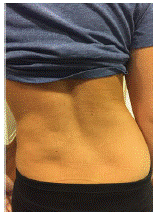
Figure 1:
Neurological examination: Weak Single Leg Calf Raises (SLCR) and was only able to perform three assisted raises to 50% range. Gr 5 strength of right leg SLCR x 5 repetitions. No other myotomal weakness was detected. The S1 reflex on the right side was absent; other lower limb reflexes were preserved. No sensory changes were noted. The Straight Leg Raise test (SLR) was positive in reproducing his posterior thigh pain and limited at 20 degrees on the right side. His left SLR was limited by hamstring tightness at 50 degrees.
Investigations: Lumbar spine CT reported a L5S1 disc protrusion with right S1 nerve root compression.
Treatment given: Day 1 treatment: Valium, Endone, Panadeine forte and Ibuprofen was prescribed. List correction with left side gliding exercises in standing. Directional preference Mechanical Loading Strategies (MLS) derived from the McKenzie method was implemented in the treatment of discogenic low back pain. Taping was used as a second treatment day 1, to maintain the improved spinal position. Following two treatments sessions three day apart, Sharanu showed encouraging signs of improvement (in pain and function, not neurological signs) with conservative care. He is likely to have the same prognosis of pain reduction and full recovery of disability & function, by May-June this year.
Sciatica Case due to Direct Pressure of a Purse in Hip-Pocket
A male financial executive of around 38 years reported to me in early 2022 with complaints of pain in right hip radiating up to knee for last 4 months. The history revealed that he commuted to his office on a motor bike for 20kms each way for 6 months. Further detailed revealed that the pain was much less in weekends when he is at home. Another small observation revealed that he was in the habit of keeping his purse with lots of cards and other documents apart from cash, in the right hip pocket of his pant/Jeans. On physical examination, the patient was well built, had a normal weight with a Body Mass Index (BMI) of 24. On neurological examination no paraesthesia but some tenderness on right L4 to S1 dermatome was elicited. When I observed him sitting on the bike, it struck to me that his bulky purse was pressing his Sciatic nerve region. I advised him to use Ibuprofen 400 tablet (contains ibuprofen as its active ingredient, to provide relief from pain and inflammation) once in the morning after breakfast and another after dinner and shift his purse from hip pocket to side pocket. After a week’s time he was relieved of pain even after discontinuing the tablets. He continues to be painless now and has cultivated the habit of keeping the purse inside pockets or front pocket of the shirts.
Sciatica Secondary to Pelvic Floor Hernia
A 45-year-old female patient presented with pain in her lower back and radiating to left buttock, posterior part of the left thigh, and left leg for last one year in early 2020. She complained of mild paraesthesia in that region. There was no significant medical or surgical history or history of trauma. On examination, the patient was overweight with a Body Mass Index (BMI) of 30. On neurological examination mild paraesthesia were present in L4 to S3 dermatome. However, no motor weakness was evident. The patient was referred for MRI of the lumbosacral spine but, no evidence of any significant disc bulge or nerve root compression was seen in the lumbosacral spine. However, it revealed a large well-circumscribed lobulated dumbbell-shaped mass lesion in the left gluteal region between the gluteus Medius and minimus muscle extending medially into the pelvis through the greater sciatic notch. In the pelvis, the mass extended into left ischio-rectal fossa. The mass had signal of intensity like subcutaneous fat. In the pelvis, the lesion displaced lumbosacral plexus medially which was seen draped over the lesion. The sciatic nerve was compressed and pushed posteriorly by the mass lesion in the greater sciatic notch. Sciatic nerve appeared mildly thickened and hyperintense on STIR images in the region of thigh. No evidence of any gluteal muscle atrophy or bony erosion was seen. An ultrasound-guided fine needle aspiration cytology confirmed the diagnosis of lipoma that needed surgical removal, after which the lady got rid of pain permanently. Sciatic hernia is a rare type of pelvic floor hernia [5].
Two Episodes of Sciatica in Same Lady Different Causes
This is a case of a lady around 63 years now, just recovering from a recent episode of Sciatica. Current complaint of back ache for about 6 months, exaggerated while standing and walking relieved by rest. Within 2 weeks of this recurrence of sciatica she had an attack of Shingles (herpes Zoster) painful rashes on left lumbar and hip region shape and suffered lot of neurological pain for nearly 3 months. Possibilities of that Shingles triggering silent Sciatica was considered. Key history of importance included her having been diagnosed as early case of Breast cancer and treated by left sided mastectomy, and radiotherapy in one of the best Cancer Hospital in Bangalore. She had faced the entire episode positively and was doing well leading almost a normal life, till six months ago. Nearly a decade ago she had first episode of Sciatica, cured by Unani treatment as detailed later.
In the current episode she went to same Unani treatment first (that was successful a decade ago) for about 2 weeks with no success, then for allopathic treatment. A whole-body PET CT scan was done to rule out the possible secondary of breast cancer in spinal cord as the cause. As allopathic treatment also did not give any relief. In her casual visit to her confidant Dentist, who knew her oral health, and lack of left molar teeth and the fact that jaw was not properly aligned, suspected a surprising link of the Dental and Back Pain Connection. He explained the possible link and asked her to try a denture for a minimum of one month. After agreeing he got her an appropriate denture done and advised regular use in daytime for mastication for a month. The miracle happened, as the frequency and intensity of sciatica reduced slowly and steadily and after a month, she is completely relieved of her backache and Sciatica for the last one week and she walks now comfortably.
Her first episode of Sciatica was nearly a decade ago, when she had approached Government Unani Medical college hospital, after a month of sciatica pain and trying home remedies. There she was treated with the form of poultice and 3 different varieties of oil massages (Lord S Sciatica drops, a paste of various Tahleele-warm anti- inflammatory drugs with combination of anti-inflammatory oil and Sciatica pain relief oil of Herbal origin from their own herbal farm, for about an hour daily for a week. That had relieved her completely for a decade until 6 months ago before the current episode. It had not bothered her even throughout her cancer treatment for nearly 2 years.
A Case of Hemilaminectomy
A 59-year-old female presented to the Orthopaedic OPD of a medical college in 2020, with complaints of insidious onset of right leg radicular pain. She had no history of numbness, tingling, weakness, or bowel or bladder incontinency. This was her first experience. Physical examination had significant right side straight leg test positive at 45 degrees and left lower extremity at 70 degrees. Plain lumbosacral X-ray was inconclusive. The patient’s lumbar MRI reported right L4-L5 lateral disc herniation with extrusions and the patient had partial response to conservative management.
She was advised and underwent a minimally invasive hemi-laminotomy of right side L4-L5 and removal of the extruded disc particles. The patient had an uneventful postoperative course. She had immediate pain relief after surgery and was able to ambulate on postoperative day one. She was discharged from the hospital the following day after surgery.
Discussions
Sciatica pain is a direct result of pressure on sciatic nerve or sciatic nerve root pathology. The sciatic nerve is made up of the L4 through S2 nerve roots, which coalesce at the pelvis to form the sciatic nerve. About 2cm in diameter, the sciatic nerve is easily the largest nerve in the body (Figure 2). Sciatica pain often is worsened with twisting, bending, or coughing [2,4].
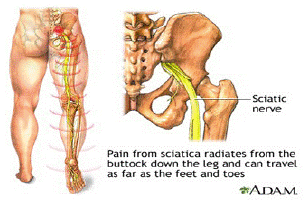
Figure 2:
Bulging disc and Lumbar Disc Herniating (DH) are the commonest cause of Sciatica in India (Figure 3). Based on population studies, the incidence of symptomatic LDH accounts for an appropriate 1% of the general population [5].
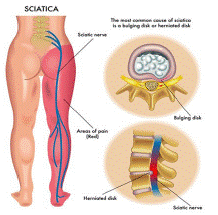
Figure 3:
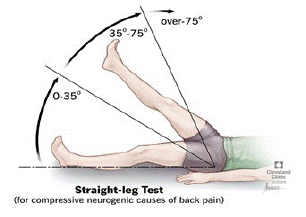
Figure 4:
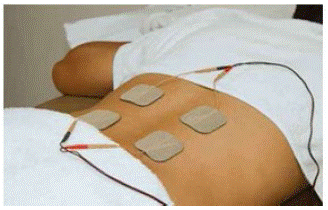
Figure 5:
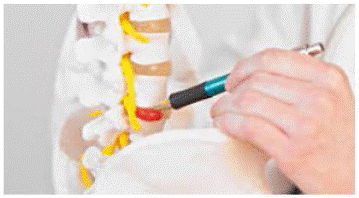
Figure 6: Overall survival, autologous stem cell transplant (ASCT) versus no ASCT (p=0.12).
The main symptoms of most LDH patients are low back pain with sciatica and difficulty in walking [6]. Coronal and sagittal trunk tilt, spinal coronal and sagittal imbalance related to sciatica in LDH patients lead to abnormal trunk tilt appearance, especially when sitting, standing, and walking. The trunk tilt appearance could cause great distress to the patients. In addition to pain relief, patients worry about whether and when the trunk tilt could recover. A herniated disk or an overgrowth of bone puts pressure on part of the nerve causing inflammation, pain and often some numbness in the affected leg [5].
Diagnosis in India- Across Different Health Systems
The review of diagnostic processes in India describes almost similar methods in allopathy and Indian systems of health system (Ayurveda, Yoga, Unani, Siddhi, and Homeopathy -AYUSH). Key steps are:
History Taking: In India most practicing doctors across all systems usually determine the cause of Sciatica pain by asking a few questions and a thorough physical examination. Patients with sciatica usually experience pain in the lumbar spine, and almost invariably, the pain will be unilateral. A common characteristic is that pain is radicular to the ipsilateral affected extremity. Often, patients may describe pain or a burning sensation deep in the buttocks, and frequently they will describe paraesthesia accompanying the pain. Less commonly, there is associated ipsilateral leg weakness. These patients may describe the affected leg as feeling heavy [1,2].
Physical Examination: During physical exam, the doctor sees how your spine carries your weight. You may be asked to walk on your toes and heels to check the strength of your calf muscles. Your provider may also do a straight leg raise test. For this test, you’ll lie on your back with your legs straight. Your provider will slowly raise each leg and note the point at which your pain begins. This test helps pinpoint the affected nerves and determines if there is a problem with one of your disks. You will also be asked to do other stretches and motions to pinpoint pain and check muscle flexibility and strength [1,2,7].
Imaging is initially of little value. For pain that has been persistent for 6 to 8 weeks and not responding to conservative management should be imaged. X-rays aren't very suitable for diagnosing a slipped disc because they don't say much about the situation: Plain films of the lumbosacral spine evaluate for fracture or spondylolisthesis. A lot of people who are found to have spinal disc damage on x-ray images don't have any symptoms. Preferably an MRI or a non-contrast CT scan may be performed to evaluate fracture if plain films are negative. In cases where the neurologic deficit is present or mass effect is suspected, if there be symptoms Numbness or paralysis in one or both legs, Impaired function of the bladder or bowel, unbearable pain despite treatment, Severe symptoms remain for many weeks despite treatment, immediate MRI is the standard of care in establishing the cause of the pain and ruling out pressing surgical pathology. A tumour in spinal cord is other possible cause of the pain. Nerve conduction velocity studies /electromyography to examine how well electrical impulses travel through the sciatic nerve and the response of muscles. Myelogram to determine if a vertebrae or disk is causing the pain.
Sciatica Management in India
Conservative Management
Allopathic System:
a) Conservative management of Sciatica in allopathy depends upon looking for any pressure on sciatic nerve as seen in our young Bike riders and LDH cases include anti-inflammatory drugs for temporary relief of pain, strapping for immobilization and improved spinal position and spinal and back, gluteal and thigh muscles strengthening exercises after pain recedes.
b) Use of hot packs, a heat lamp, or a heating pad on the lowest setting is advocated for initial therapy. For continuing pain, using both warm and cold packs, one at a time is suggested. Stretching exercises for the low back might provide some relief.
c) Sciatica during pregnancy: During pregnancy, levels of the hormone relaxing increase. This hormone helps prepare your pelvis for childbirth by relaxing ligaments and widening your hips. As your belly grows and ligaments loosen, your center of gravity shifts, which can cause the sciatic nerve to get pinched or irritated. During the second and third trimesters, mostly in the third trimester baby's head may rest heavily on the sciatic nerve and as it presses on the sciatic nerve, the mother experiences pain, numbness, and/or tingling It usually begins deep in the buttocks and radiates down the back of your legs. As the baby shifts position, sciatica will disappear as quickly as it came. In the meantime, pregnant women can be given temporary relief by a heating pad while seated or lying down in a comfortable position. Alternately sitting in a warm tub bring relief. Stretching exercises like swimming or walking, that focus on the lower back, buttock, and hamstring muscles can reduce discomfort. Avoid standing for long periods of time, lifting heavy weights. As the sciatica pain is predominately on one side, lying on the other side relieves it.
d) Another Important nonsurgical management of lower back pain and sciatica, is the injection of steroids & local anaesthetic directly into epidural space that surrounds nerve roots and spinal cord.
e) The key feature of using MLS in assessment and treatment is the centralisation phenomenon, i.e., abolishment of distal symptoms because of repeated movements of the lumbar spine. Applying this principle of MLS, left side glide direction treatment was given as it results in centralisation of back as in the case of Sharanu. Taping a second treatment on day 1, helps to maintain the improved spinal position, reducing load through the disc and ultimately reducing inflammation.
f) The secondaries of cancers anywhere in the body (usually breast or Cervix in women) can deposit in the spinal cord lumbar region to produce pressure and Sciatica. A Positron Emission Tomography (PET) scan is an imaging test that uses a radioactive a tracer to look for potential secondaries (spread) of breast cancer, which an MRI or CT scan may not show) [7,12].
Treatment of Sciatica in Unani System: Unani researchers in India quote a lifetime prevalence of 4-5%. In Unani system, sciatica is known as Irq al-Nasa and Rengan. Principle of treatment of sciatica in Unani system of medicine is based on fundamental etc- i) Tanqiya-e-Mawad-e-Fasida (Cleansing and elimination of morbid material), ii) Tahleel-e-Warm (Resolution of inflammation) and iii) Taskeen-e-Dard (Pain relief). (Liniment)-tila is prepared by paste of various Tahleele-Warm anti- inflammatory drugs with combination of anti-inflammatory roghan (oil) and are used locally for massage at the site of pain. Some of the combination of drugs used as tila are- Tila Baaboona, Iklil-ul-malik, Qanturiyoon Daqeeq and Sirka (Vinegar). Viral infections such as shingles are known to mimic spine pain and result in sciatica pain symptoms. If the pain precedes painful rash over any area of the lower back or down the leg on one side, it could be related to shingles. The attack of Shingles (herpes Zoster) painful rashes on left lumbar and hip region triggering silent Sciatica must be considered in the type cases reported in case no 4. Since the virus often spreads out from spinal nerve "roots," one may experience back pain /Sciatica even if outbreak occurred in a different area of the body [8].
Ḥijāmah with 2 cups (over the gluteal area and thigh/ over calf muscle and below the ankle), with 5 cups and even with 9 cups are done in patients of sciatica. These settings/ protocols of Ḥijāmah in patients with sciatica show a significant reduction in pain and disability [9].
Ayurveda treatment for Sciatica: Ayurvedic conservative treatment includes use of yogaraja guggulu, Vataganjakusha, Saindhavadi taila are also very useful in treating Sciatica. Ayurvedic herbs that improve the symptoms of Sciatica include [10].
Babunah (Bitter Chamomile) reduces the pain of sciatica and rheumatism due to the advancement of age. Compressed bitter chamomile flowers are prescribed for sciatica. Guggulu’s (Indian Bdellium), anti-inflammatory properties, relaxes the sciatic nerves. Rasna (Vanda Orchid) an herb reduces pain due to its anti-inflammatory properties. Juniper oil massaged onto the thigh muscles with firm strokes or pressure, reduces sciatic nerve pain. Jaiphal (Nutmeg) Nutmeg is coarsely powdered and then fried till it turns brown. This mixed with sesame seeds oil, is applied to areas where the sciatic pain is intense for relief. Kumari (Indian Aloe) is helpful in treating sciatica and lumbago. Shallaki’s (Boswellia or Frankincense) anti-inflammatory properties applied externally to get relief from sciatic pain.
Homeopathic Treatment for Sciatica:
Magnesia phosphoric: Homeopathic medicine magnesia phosphorica is a reliable prescription for right-sided sciatica.
Gnaphalium polycephalum: Gnaphalium polycephalum is the most useful medicine for pain in the sciatic nerve when attended with numbness and sciatica pain alternating with numbness. This is also prescribed when the pain is confined to the calves and feet.
Arnica montana, Hypericum perforatum, and Ruta graveolens are best homeopathic medicines for sciatica pain from a back injury, caused by falls or blows. Ruta graveolens is the remedy where sciatica pain gets worse on lying down at night.
Hypericum perforatum is considered when the sciatic pain is attended with tingling, burning, or numbness in the affected leg.
Cotyledon umbilicus: Cotyledon umbilicus is a well indicated medicine for intense sciatica pain where it is accompanied by high sensitivity in lower limbs or heaviness in the lower limbs and in cases of stinging pain in the left hip.
Bryonia alba: Significant homeopathic remedy for sciatica that worsens with walking and lying down still provides some relief and where the person feels relief by lying down on the lower limb of the affected side.
Kali iod: is an excellent homeopathic remedy for sciatica pain that offers great help when sitting or standing worsens pain, or pain that gets worse at night.
Rhus tox: This medicine is given for sciatica pain that becomes more painful with rest and pain that arises from lifting a heavyweight.
Valeriana officinalis: A best homeopathic prescription for sciatica pain where standing increases pain and where severe pain is felt from a calf to heel.
Lifestyle Changes: Homeopathy advises lifestyle changes to manage sciatica pain along with medicines. A few techniques to adopt for the right way to sit, stand, or bend to lessen the stress on the back are taught. The first on the not-to-do list is forward or backward bending. The next is lifting heavyweights. Prolonged sitting and standing must also be avoided. Reducing body weight as well as avoiding high heels and quitting smoking are advised. Warm applications in the affected area, sleeping on a firm mattress are also recommended. Stretching exercises and physiotherapy also advised as they hasten the positive effects of homeopathic medicines [11].
i. Yoga Stretches and Exercises to Ease Sciatica Pain: There are 4 simple exercises that help in reducing sciatic nerve pain in your low back.
ii. lLying Knee-to-Chest Stretch: Lie on our back with our legs extended, without arching back. Slowly bring one knee toward your chest and grasp it with your hands. Pull on the knee gently until you feel a mild stretch in your lower spine and hip. Hold 5 to 30 seconds. Lower slowly. This is done on both sides irrespective of the side affected.
iii. Pelvic Tilt: With the purpose of strengthening the lower abdominal muscles and stretch the low back- Lie on your back, Exhale, and tighten your abdominal muscles while pushing your belly button toward the floor and flatten your lower back. Repeat the pelvic tilt 10 times holding the position for 5 seconds each time.
iv. Lower Trunk Rotations: To increase your spine’s mobility and flexibility, lie on your back with both knees bent upright and both feet flat on the floor. While holding both knees together, rotate your knees to one side and hold for 3 to 5 seconds. You will feel a gentle stretching sensation in the opposite side of your lower back and hip area. Next, contract your abdominal muscles and rotate both knees to the opposite side and hold for 3 to 5 seconds. Repeat up to 10 times on each side.
v. All Fours Opposite Arm and Leg Extensions: To strengthen your abdominal muscles, low back and stabilize those areas. Begin by positioning yourself on all fours. Contract your abdominal muscles to help keep your back flat and straight. Raise one leg upward behind you and straighten in outward. Hold for 3 to 5 seconds. Repeat the movement on your opposite side.
QI Approach: A New German technology powered by Data Intelligence & Technology based on regenerating new tissue is the most sustainable long-term answer to recover from back pain. This is done in 4 essential steps.
Step 1: Frequency Specific Microcurrent (FSM) is a new technology and has been proven to be a highly effective treatment for cell repair. A new device works on those specific current frequencies that naturally occur in our cells. FSM is applied to the body with a device that delivers a weak low-level current to the affected area [14].
Step 2: Digital Spine Analysis: DSA is a spine function test which identifies weakness in the spine. DSA is a computer and eliminates human error. Once they find the weak tissue, they can find the root cause of back pain.
Step 3: Isolation Treatment: The device can isolate the weak area and precisely target weak tissue accurately. 1 session of Isolation Treatment is more effective than 3 sessions of conventional physiotherapy. This results in focused treatment and hence the regeneration of tissue is faster.
Step 4: Recurrence Management; It is designed to help patients take care of their spine in the future and manage any bout of pain with success by –further enhancing the load bearing capacity of the spine, increasing the ability of your body to sustain normal activity, and realizing additional higher functional goals as planned previously.
This unique 4-step approach claims 90% success rate. The eligibility criteria include; When the pain a) feels like an electric shock, b) pain radiates to your legs c) coughing & sneezing increases the pain, d) pain hampers daily activities like walking, sitting and bending e) Loss of balance or dizziness when turning your neck and f) pain is accompanied by loss of bladder control and When surgery has been advised [14].
Surgical Management
Discectomy: A fibrous-elastic material called disc, if comes out naturally between the 2 vertebrae and compresses the nerve roots. Discectomy is the most common surgery used for herniated disc in the lumbar region. All surgeries lead to permanent cure of Sciatica. In this procedure, the portions of the disc or entire disc that are causing the pressure on the nerve root are removed. The surgeon will access the disc through an incision in our back is the most common surgery used for herniated disc in the lumbar region. A Microdiscectomy is a common surgical approach used to treat sciatica that is caused by a lumbar disc herniation. In this surgery, a small part of the disc material under the nerve root and/or bone over the nerve root is taken out. For the ruptured intervertebral disc, the herniated disc operation is performed on the patient. There are four surgical approaches for Lumbar Disc Herniation (LDH), namely i) PEID- posterior endoscopic interlaminar discectomy; ii) PETD- posterior endoscopic transforaminal discectomy; iii) UBED, unilateral biportal endoscopic discectomy; iv) MED, micro-endoscopic discectomy. As the spinal imbalance caused by sciatica and LDH is non-structural and could improve with the relief of pain after all the above mentioned Endoscopic Discectomies [7,15].
Deuk Laser Disc Repair uses a precision laser to vaporize the herniated tissue and provide the most effective laser spine surgery available. Bone and surrounding tissues are not damaged or removed during this procedure, unlike traditional microdiscectomy, artificial discs and spinal fusions.
Laminectomy: Laminectomy is a surgery that creates space by removing bone spurs and tissues associated with arthritis of the spine (Figure 7). It usually involves removing a small piece of the lamina of the vertebrae. Laminectomy enlarges the spinal canal to relieve pressure on the spinal cord or nerves. A Radiological Characteristics and Recovery Following Endoscopic Discectomy review of a total of 110 LDH patients (18.3%) presented with spinal imbalance, inferred that Sciatica-related spinal imbalance occurs in 18.3% of the Lumbar Disc Herniation (LDH) patients receiving endoscopic discectomy. Different subgroups of spinal imbalance present different characteristics. Spontaneous correction of the spinal imbalance could be achieved when sciatica was relieved immediately after surgery and well-maintained during follow-up [16,12].
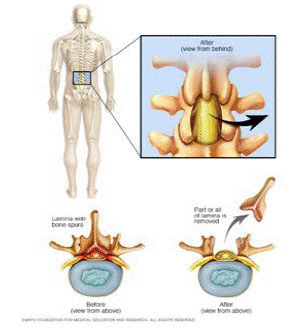
Figure 7:
References
- Sciatica, David Davis; et.al. https://www.ncbi.nlm.nih.gov/books/NBK507908/
- Sciatica: Review of Epidemiological Studies and Prevalence Estimates, Nov. 2008; 33: 2464-72.
- Top 9 Causes of Sciatica Nerve Pain, https://www.lybrate.com/topic/
- Natural Sciatic Nerve Pain Relief Options. https://www.reinhardtchiropractic.com/blog/
- Slipped disc: Overview. 2020.
- Kaur N, Kaur N, Chhabra HS, Singh M, Singh P. A case report of sciatic hernia as a cause of sciatica- dilemma for family physicians. J Family Med Prim Care. 2022; 11: 3304-3307.
- Wang L, Li C, Wang L, Qi L, Liu X, et al. Sciatica-Related Spinal Imbalance in Lumbar Disc Herniation Patients: Radiological Characteristics and Recovery Following Endoscopic Discectomy. J Pain Res. 2022; 15: 13–22.
- Suhail S, Jamil SS, Khan S, Jilani S, Ansari S. Concept of Irq al-nasa (sciatica) and its management in Unani system of medicineInternational Journal of Unani and Integrative Medicine. 2020; 4: 05-08.
- Ḥijāmah (Cupping Therapy) MB Naleem et.al, https://medical.advancedresearchpublications.com/ index/CHCMJ/article/view/1207
- Sciatica, Know Ayurvedic Herbs to Cure It! Vikas Mohan Gupta, https://www.lybrate.com 5/09/22
- Homeo treatment for sciatica.
- Sciatica Exercises: 4 Stretches for Sciatica Pain. 2020.
- Shingles Back Pain: Symptoms, Causes, & Treatment, Shani Saks. 2022.
- QI Approach, Powered by Data Intelligence & Technology.
- Herniated Disc Surgery, Dr Deuk.
- Laminectomy, Mayo Clinic.